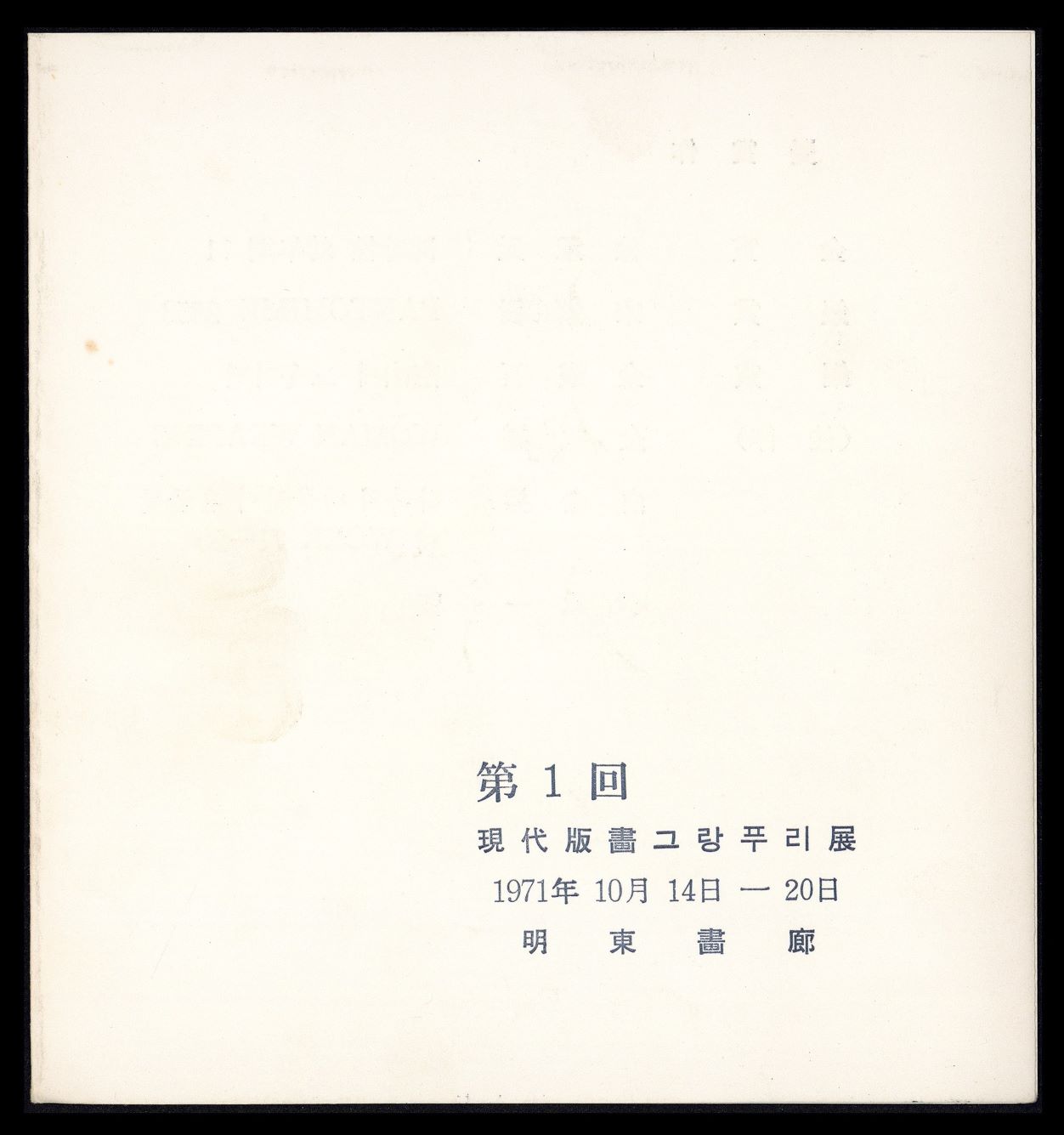
The First Contemporary Prints Grand Prix Exhibition, Leaflet, 1971, MMCA Art Research Center Collection
Contemporary Prints Grand Prix Exhibition
* Source: MMCA
Related
-
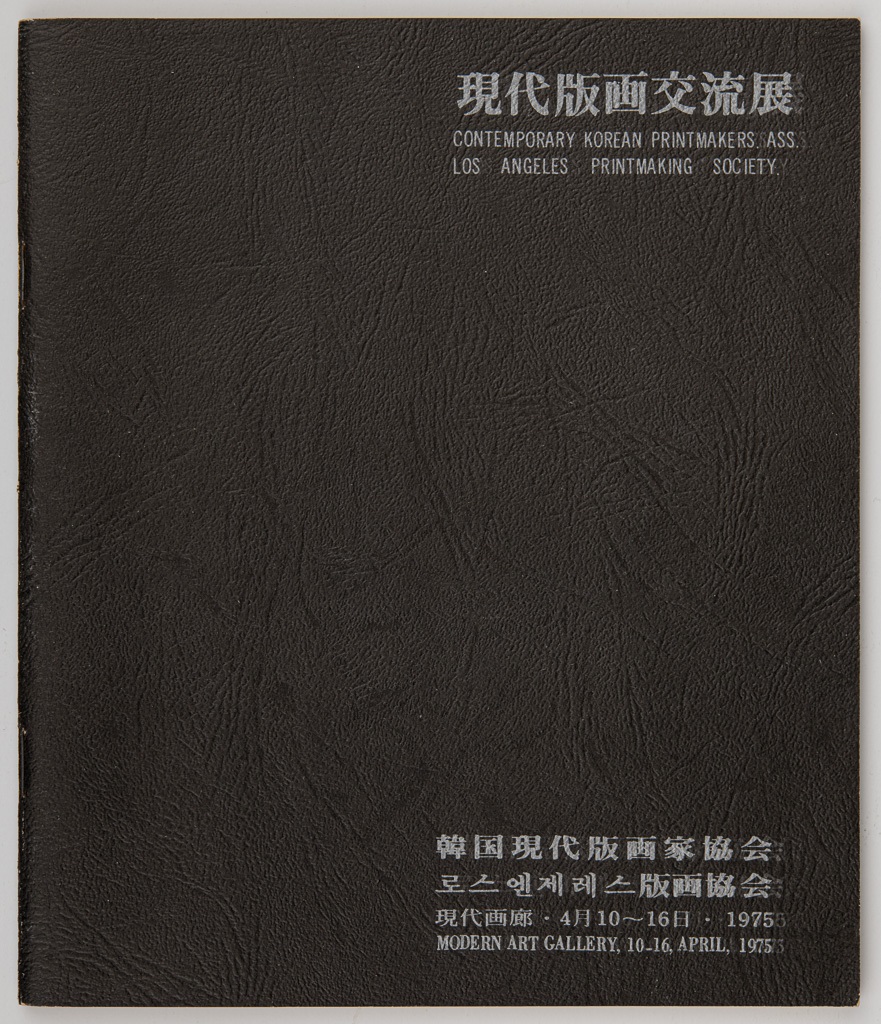
Contemporary Print Exchange Exhibition
The Contemporary Print Exchange Exhibition was an exhibition organized by the Korean Contemporary Printmakers Association (Hanguk hyeondae panhwaga hyeophoe) and the Los Angeles Printmaking Society (Losenjeles panhwaga hyeophoe) and held at Hyundai Hwarang from April 10 to 16 in 1975. The Korean Contemporary Printmakers Association hosted a number of international exchange exhibitions in the 1970s, including three with the Los Angeles Printmaking Society in 1973, 1975, and 1976. The 1975 exchange exhibition was held at Hyundai Hwarang in South Korea, and the other two were held at the USC Pacific Art Museum in Pasadena in the U.S. The Korean Contemporary Printmakers Association was able to establish direct contact with the Los Angeles Printmaking Society largely owing to Kim Bongtae, an artist active in the U.S. at the time. The International Contemporary Print Exchange Exhibition in 1975 featured Kang Whansup, Kim Minja, Kim Sangyu, Kim Choungza, Kim Chonghak, Kim Tchahsup, Kim Tschang-yeul, Kim Hyungdae, Ro Jaewhoang, Park Rehyun, Bae Yoong, Suh Seungwon, Yoo Kangyul, Youn Myeungro, Rhee Sangwooc, Lee Ufan, Cho Kookjeong, and Hwang Kyubaik. They showed diverse trends in contemporary Korean printmaking in the 1970s. This exhibition proved that international exchange through art was active and direct even when printmaking was only recently recognized as a medium of artistic expression in South Korea. The fact that the association organized the exhibition on an equal footing with the U.S. indicates the expansion of communication channels through art and the active transformation of international exchange.
-

Korean Contemporary Printmakers Association
The Korean Contemporary Printmakers Association was founded in January 1968 to promote the distribution of and understanding about modern Korean prints while establishing a network between members. It was led by artists such as Kang Whansup, Kim Minja, Kim Sangyu, Kim Choungza, Kim Chonghak, Kim Foon, Bae Yoong, Suh Seungwon, Yoo Kangyul, Youn Myeungro, Rhee Sangwooc, Chun Sungwoo, and Choi Youngrim. It has played an important role in the revival of Korean prints, including holding regular association exhibitions, discovering and supporting artists, sharing knowledge on print through training sessions, and planning international exchange exhibitions. It has helped to produce leading artists in the Korean print field and organized joint exhibitions with various overseas artists to create a place for art exchanges. In 1996, the association announced regulations on original prints to provide an institutional system for the global internationalization of modern Korean print and the identification of Korean prints. Currently, more than 400 members are active.
-
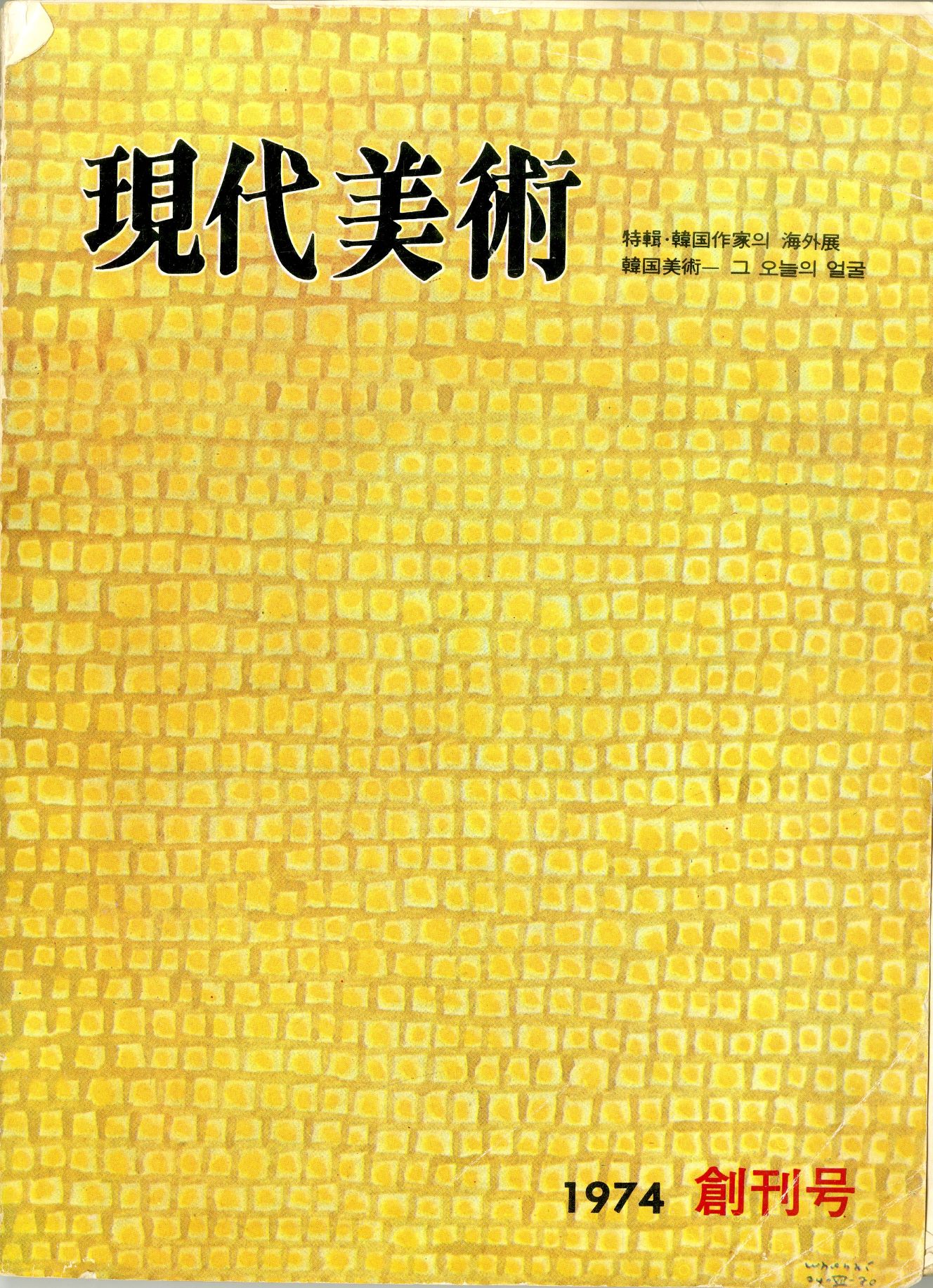
Myeong-dong Gallery
A gallery managed by Kim Munho from 1970 to 1982 which first opened in a building opposite Myeongdong Cathedral in December 1970. The gallery then moved to five different locations including Chungmu-ro, Anguk-dong, and Gwanhun-dong, before it closed in April 1982 following the death of Kim. Notable shows that took place in the gallery included; a solo exhibition of Lee Ufan’s works in 1972, the exhibition Abstraction-Situation and Form and Antiform in 1973, and a solo exhibition of Kim Kulim’s works in 1976. The Gallery also supported the launch of a periodical called Hyundai Misul in 1974, which only ran for a single issue.
Find More
-
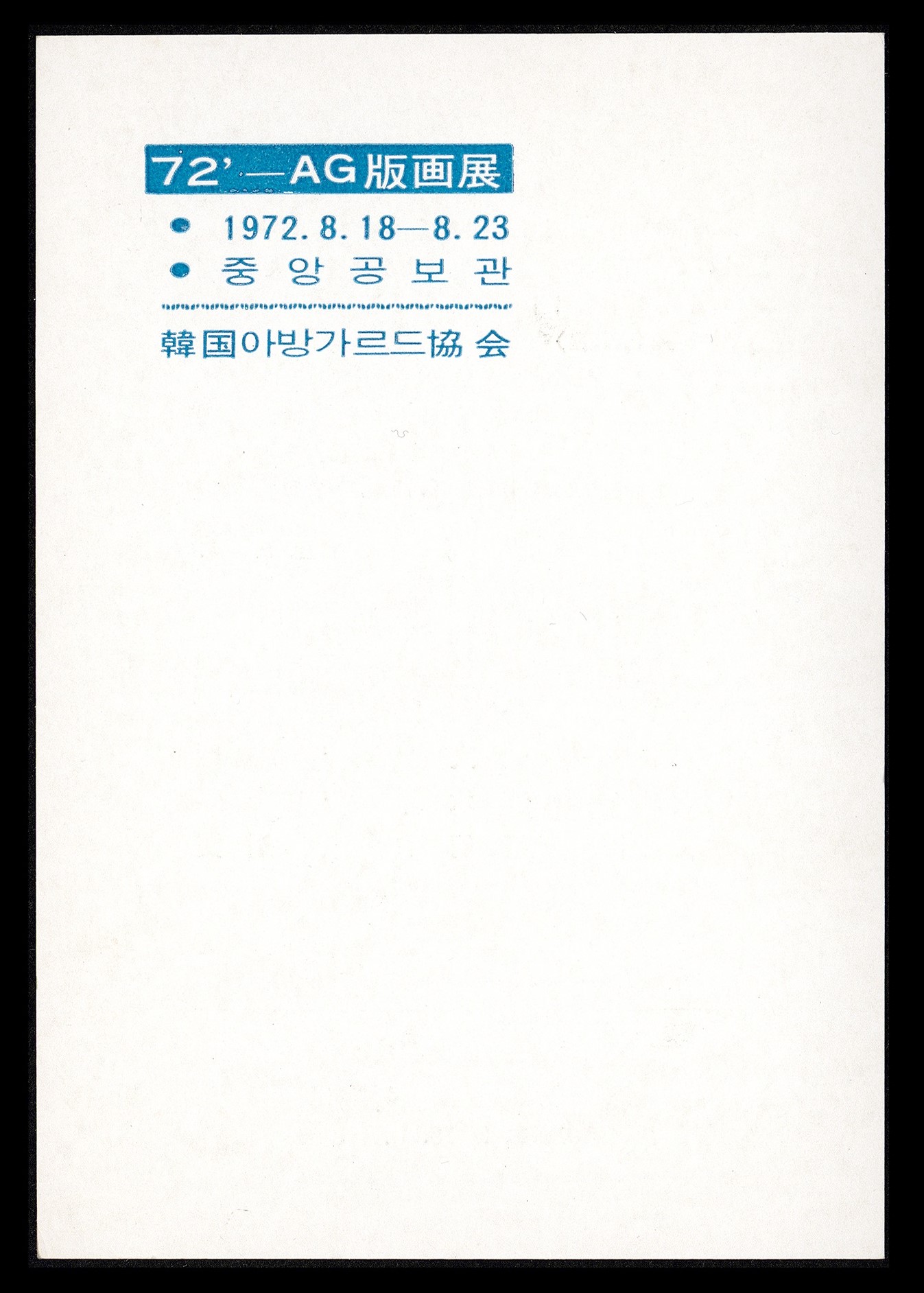
’72 Print Exhibition of AG
The ’72 Print Exhibition of AG was an exhibition of the Korean Avant-garde Association [Hanguk abangareudeu hyeophoe, hereafter AG] held from August 18 to 23, 1972 at the Fourth Exhibition Hall of the Korea Information Service Gallery. Formed in 1969, AG was a group of leading art critics and artists who created experimental works. AG was pioneering in publishing an art magazine at a time when there were no art magazines in South Korea and in providing a common theme and direction to participating artists for each exhibition. AG held five exhibitions until 1975, and the ’72 Print Exhibition of AG was its third group exhibition. In addition to Song Burnsoo’s Agreement on the Principles of North-South Unification, which featured a performance using prints, the exhibition included works by Kim Kulim, Kim Dongkyu, Kim Han, Suh Seungwon, Park Suk-won, Shin Hakchul, Shim Moon-seup, Lee Kangso, Lee Kunyong, Lee Seungjio, Lee Seungteak, Cho Sungmook, Choi Myoungyoung, and Ha Chonghyun. AG presented avant-garde prints, which differed from traditional prints and were characterized by innovation and expansion, and called them “anti-prints.” Kim Kulim, Shim Moon-seup, Lee Kangso, and Song Burnsoo continued their printmaking work after the exhibition and attempted various avant-garde experiments.
-
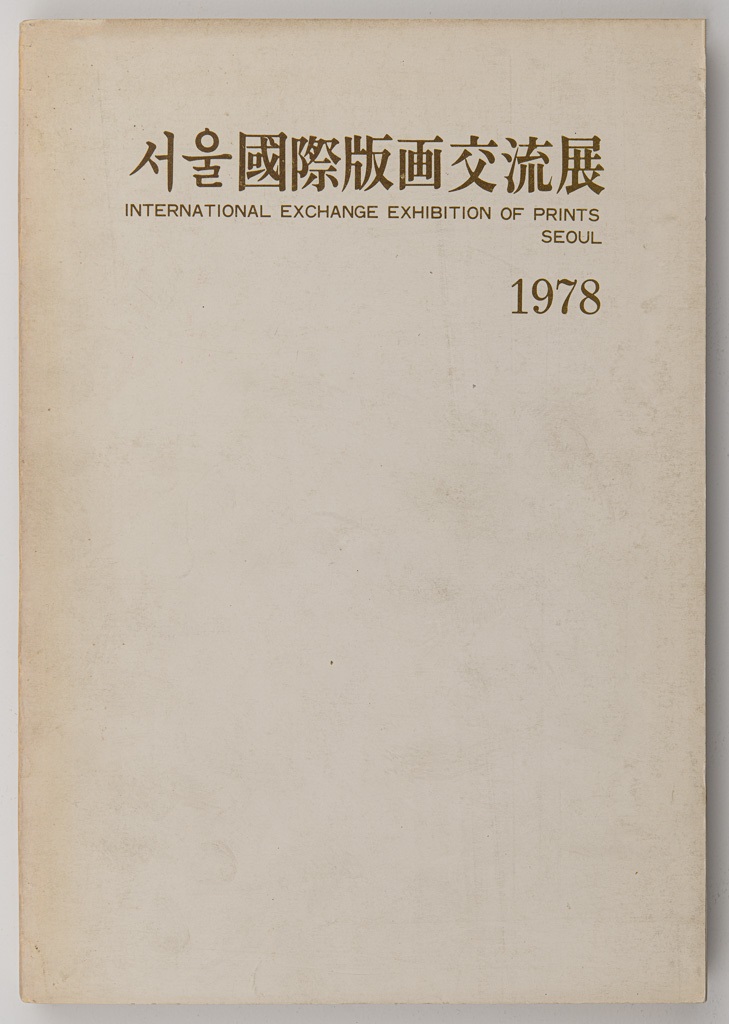
1978 Seoul International Print Exchange Exhibition
The 1978 International Exchange Exhibition of Prints Seoul was held at the National Museum of Modern Art (now MMCA) from March 14 to 23 in 1978. It was organized by the Korean Contemporary Printmakers Association [Hanguk hyeondae panhwaga hyeophoe] and sponsored by Gyegan Misool art magazine of the JoongAng Ilbo newspaper company. Artists from five countries (Korea, Taiwan, Hong Kong, Japan, and the U.S.) participated in the exhibition. There were a total of thirty-eight Korean artists: Kang Kukjin, Kang Whansup, Kwak Duckjun, Kwon Yeongsuk, Kim Kulim, Kim Minja, Kim Bongtae, Kim Sangku, Kim Sangyu, Kim Seon, Kim Youngchull, Kim Choungza, Kim Tchahsup, Kim Taeho, Kim Hyungdae, Ro Jaewhoang, Bae Yoong, Baik Kumnam, Suh Seungwon, Seok Ranhui, Youn Myeungro, Lee Kangso, Rhee Sangwooc, Lee Sunman, Lee Ywanho, Lee Ufan, Lee Eunsan, Lee Inhwa, Chang Hwajin, Chun Kyungja, Oan Kyu, Chung Chanseung, Cho Kookjeong, Jo Junyeong, Cha Myunghi, Choi Insu, Han Unsung, and Hwang Kyubaik. Ninety-seven artists submitted a total of 300 works, including fifty-nine from overseas. Korean artists demonstrated a wide range of trends in contemporary Korean printmaking, reflecting contemporaneous art, such as conceptual or monochrome art, geometric or expressionistic abstraction, and pop art, and emphasizing Korean and indigenous sentiments. The participation not only by printmakers but also by artists working in various mediums shows the art community’s interest in print genre at the time. In the 1970s, the Korean Contemporary Printmakers Association focused on international exchanges through prints, and this exhibition is one of its prominent achievements.






